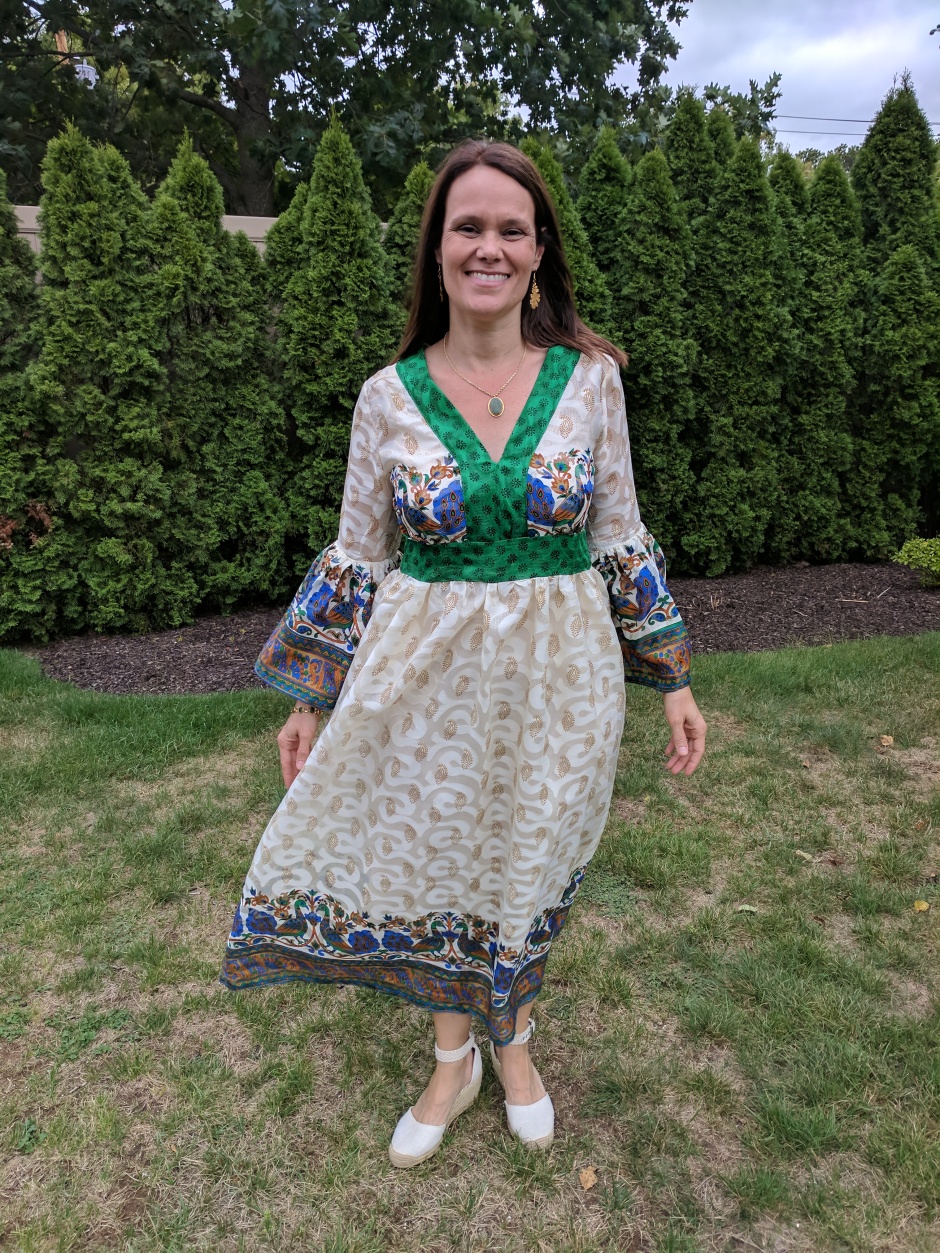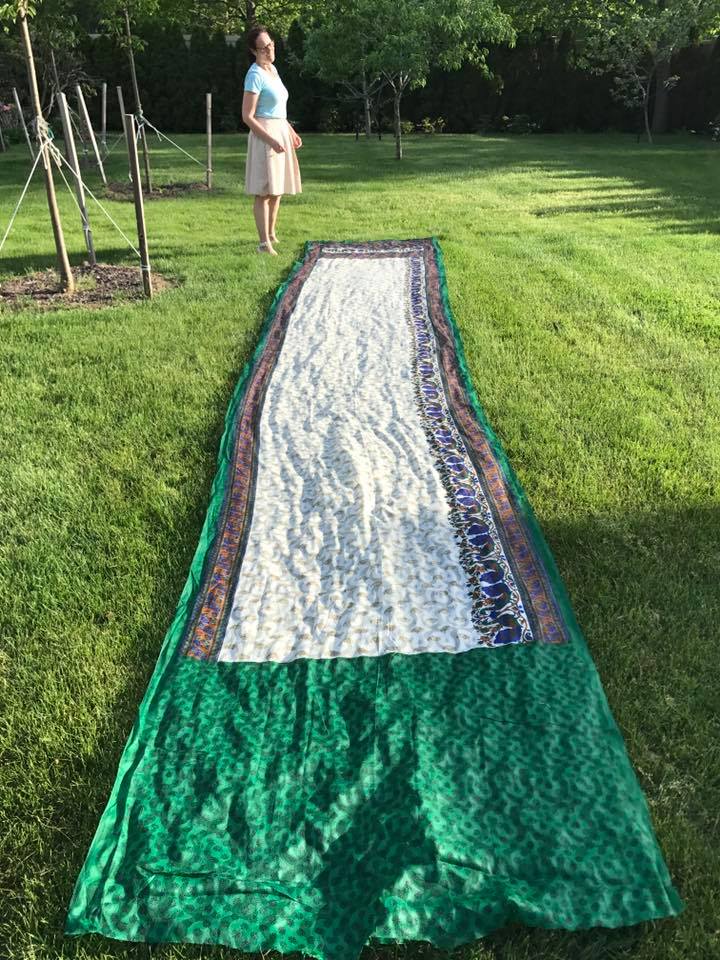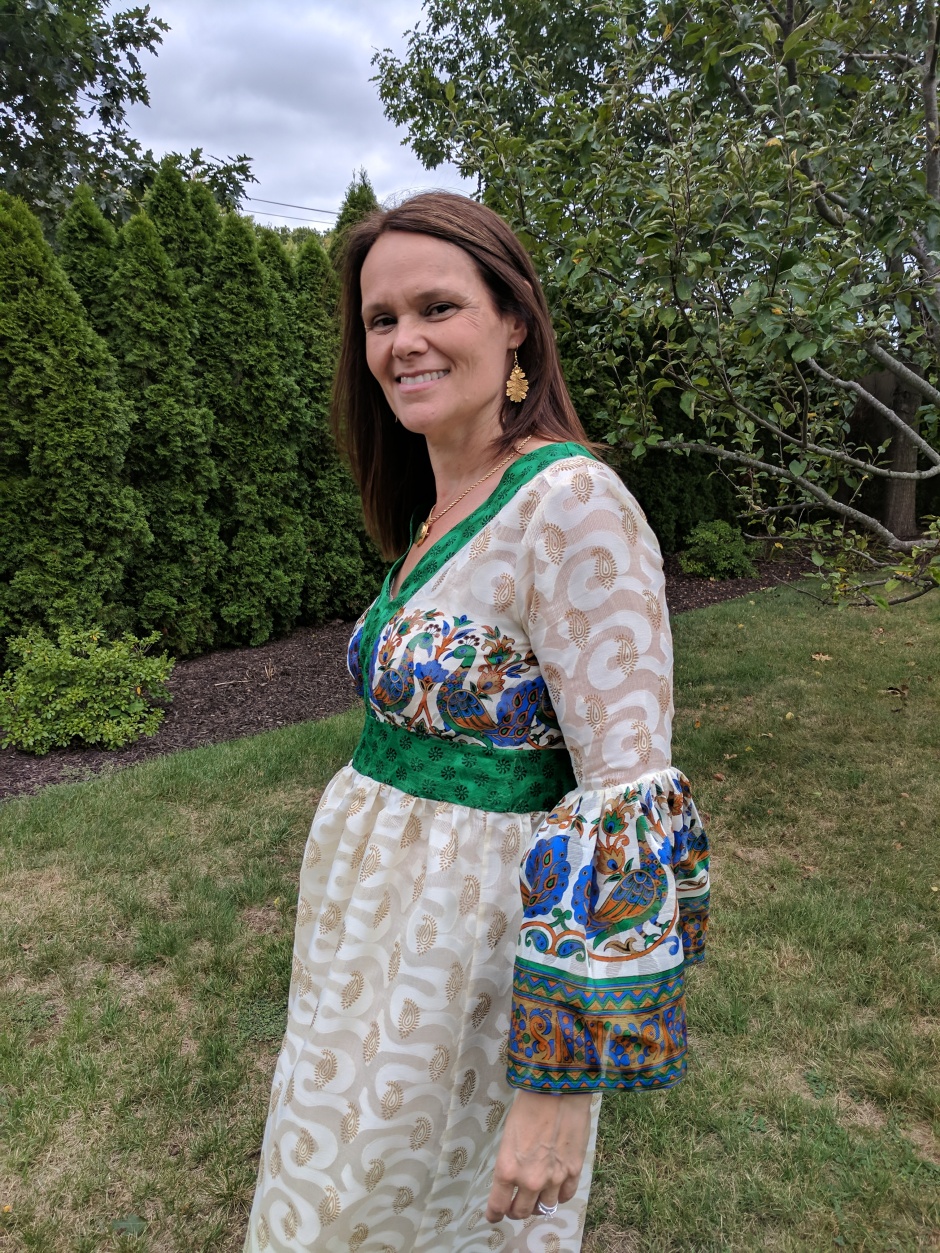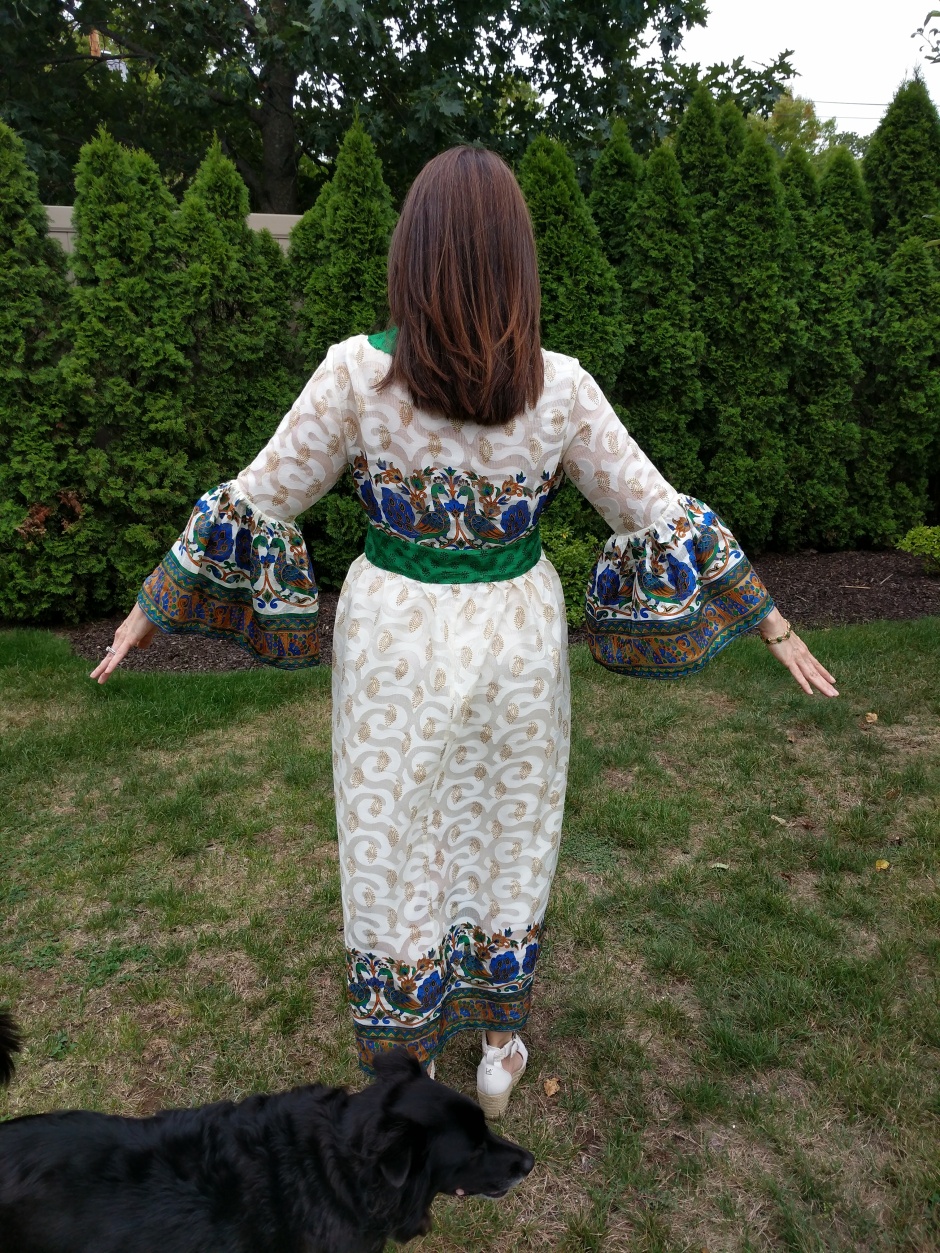I had a fun time getting the neckline on New Look 6498 to behave – but here’s the finished project – a complex neckline and a bird motif! Double trouble!

I made this out of a sari I bought in Hyderabad, India in April. If you’re not familiar with saris, here’s a picture of the whole thing as I laid it on my lawn to dry (after a soak to remove starch that’s applies during manufacturing. (Bonus – that’s me in the background in the “Brooklyn” skirt from Seamwork Magazine.)
 The whole sari weighs 15 ounces and the finished dress weighs 8 ounces. The solid green piece in the foreground is used to make the close-fitting top worn under a sari. I love the emerald green and knew I’d use it for the contrasting neckline and waistband in New Look 6498.
The whole sari weighs 15 ounces and the finished dress weighs 8 ounces. The solid green piece in the foreground is used to make the close-fitting top worn under a sari. I love the emerald green and knew I’d use it for the contrasting neckline and waistband in New Look 6498.
The sari – made of a linen/silk blend – is airy and transparent, worn draped and pleated to cover while providing airiness to deal with the hot weather in India. This makes for quite a sewing challenge, as the fabric frays easily and cannot accommodate the usual interfacing for structure. My solution was to use Solvy transparent dissolving stabilizer to tame the neckline and waistband. I treated it like an underlining (tried it on a swatch first) sewed it on, sewed up the neckline and waistband, and then soaked it off. It provided enough support to sew up these tricky bits, didn’t show through and then was removable once the sewing was done.
When I made a muslin of this dress, I discovered that the dress has a high bust, typical for Big 4 patterns on me. It is also pretty low cut. So I needed to lengthen and shorten the bust at the same time! Yeah, no problem! I thought I could solve the problem if I made the fit on the bust as close as possible. On a muslin, the midriff band cut across the lower part of my bust, making a very unflattering fit. I lengthened the bodice and front band 1.5 inches, just so that the midriff band would start right under my bust, and I straightened out the neckband a half-inch at the lowest point so I could sew it up a bit for more coverage. Finally, I took in the midriff band 1/2 inch on both sides for a closer fit. It worked! I am very happy with the fit and the placement of the peacocks on it.

Since a lining would have ruined the airiness of the dress, I wear this with a long slip I bought at a vintage shop years ago. I moved the back invisible zipper to the side so that nothing breaks up the back peacock motif.
 Back view, with my dog, Jake, photobombing. For more on this dress and the sari, see my blog, Distaff. Cheers!
Back view, with my dog, Jake, photobombing. For more on this dress and the sari, see my blog, Distaff. Cheers!

This is amazing! You look great!
And thanks for the Solvy tip
LikeLike
Lovely! The peacocks were meant to be! I’m wondering if saris may be one fabric to NOT prewash due to stabilization issues? I love saris, but I have never seen them for sale. (US.) I’m also wondering about the proper usage and spelling of the word.
LikeLike
Good point about stabilizing. They’re not meant to be cut up at all, and they’re meant to be very light, so I can see why it’s not normally an issue. Likewise, I have seen the spelling as “saree” – I had understood that it is a British spelling.
LikeLike
this dress is amazing! I love the bodice, I love the sleeves.. so perfect! Compliments!
LikeLike
Thanks so much!
LikeLike
You’ve done an amazing job with this. I love the way you’ve picked out the detail. The neckline is gorgeous.
LikeLike
Thank you!
LikeLiked by 1 person
This is beautiful finished garment! I’m a huge fan of Sari’s and buy them often in our local thrift shop for making blouses. What you’ve done with this border print is inspiring. I love these Sari’s so much I discovered an Indian fabric shop here in Victoria and I’ve been buying silk from her as well. I bought a box of fabric which was interesting – 3 yards of 100% cotton and 1.5 yards of silk died exactly the same but that wax finish on it I couldn’t get out. I soaked it in vinegar for hours and it still remained too stiff. Thank you for that tip re solvy! I always have that on hand to use when my machine starts gobbling knits down the throat plate but I never would have thought of it for sew-in stablizer!
LikeLike
Thanks for the compliments – they are gorgeous fabrics, aren’t they? For the waxy treatment, have you tried putting the fabric in the dryer? I think that’s how they remove the wax from batiks and African Dutch wax fabrics after dyeing.
LikeLike